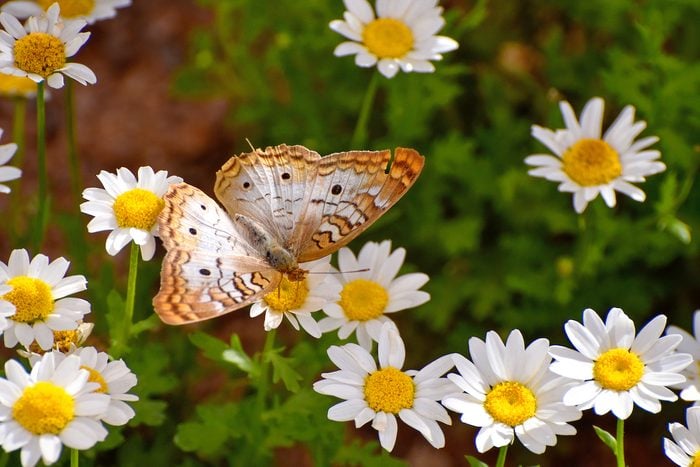
Types of White Flowers to Grow
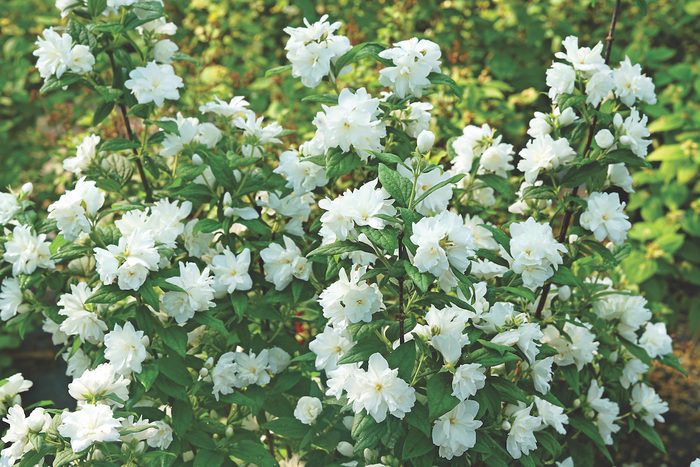
Illuminati Arch Mock Orange
Philadelphus coronarius, Zones 4 to 7
Truly a modern shrub, Illuminati Arch is much smaller than classic mock oranges, growing only about 4 feet tall, but it still has all the appeal. Its white blooms show up in late spring and offer fragrance through early summer. Prune immediately after flowering, before next year’s buds form.
Check out the top 10 small shrubs for small spaces.
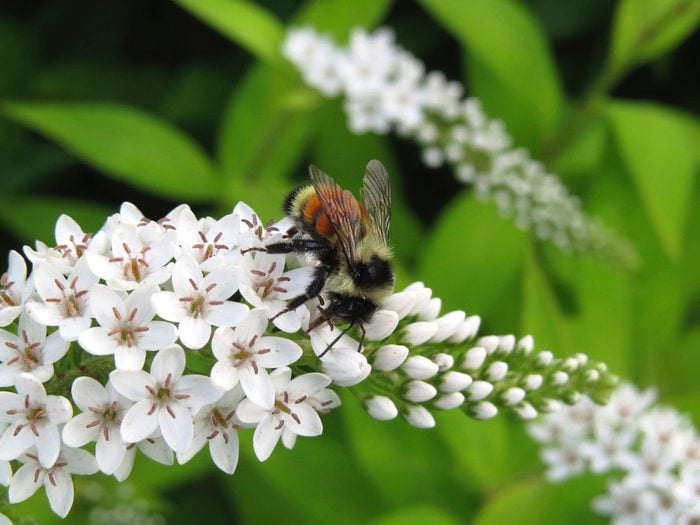
Gooseneck Loosestrife
Lysimachia clethroides, Zones 3 to 9
A perennial that relishes full sun and moist soil, gooseneck loosestrife grows 1 to 3 feet in both height and width. Each 4- to 8-inch flower spike curves downward like a goose’s neck, hence the name. The plant’s floral display wows from late spring through summer, then the foliage takes on seasonal yellow hues. Gooseneck loosestrife can be very aggressive, so be sure to take that into consideration when planting.
Love color? Try 10 purple flowers to grow in your garden.
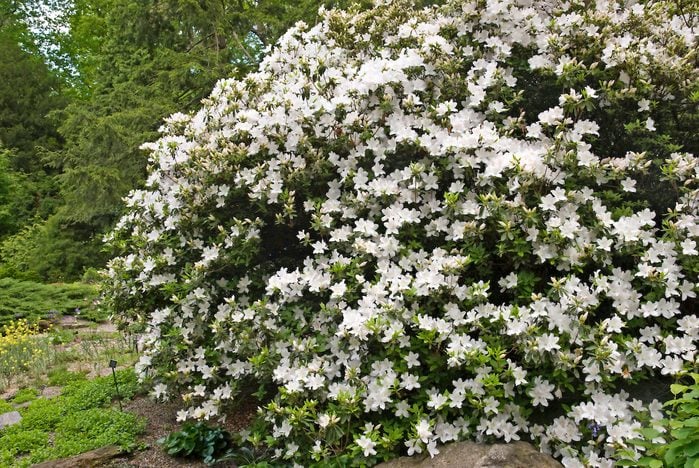
Delaware Valley White Azalea
Rhododendron, Zones 5 to 8
A landscaping favorite, Delaware Valley White azalea’s pure white flowers bloom in spring. It grows best when planted in partial shade and acidic soil. The shrub reaches 5 feet tall and rarely needs pruning. It makes a lovely hedge around patios and works well as a border plant.
Check out the top 10 hummingbird plants that grow in shade.
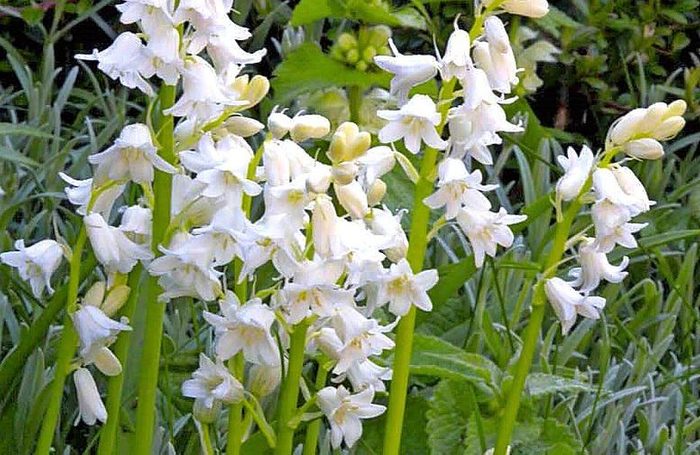
White City Spanish Bluebells
Hyacinthoides hispanica, Zones 3 to 8
Bell-shaped white flowers hang slightly downward in clusters near the top of the stalk. Plants grow in clumps, multiplying over time. Grow them in a woodland or rock garden, or try mixing them with other spring bloomers for an array of colors.
Plant Lenten rose for early spring blooms.
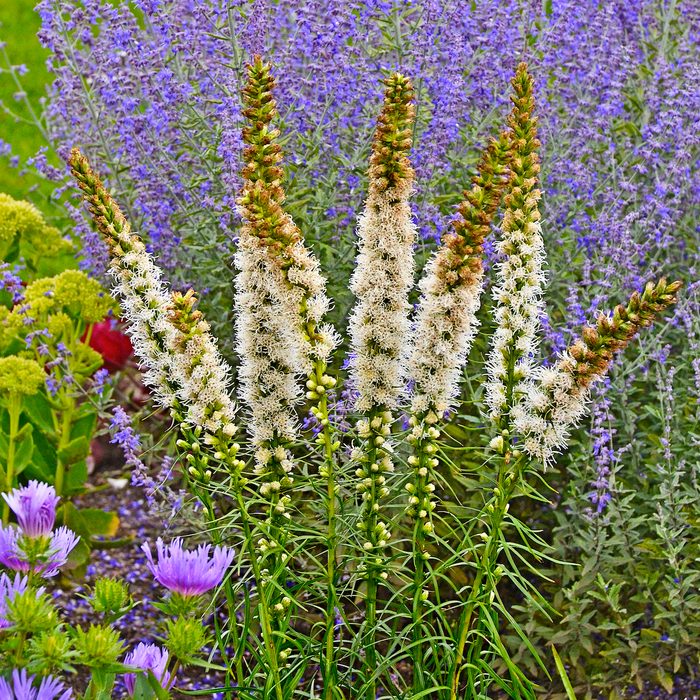
Floristan White Liatris
Liatris spicata, Zones 4 to 9
Ideal for sunny areas, this standout perennial has flower spikes that grow up to 3 feet tall, providing dramatic vertical interest. The Floristan White liatris blooms in summer and entices an array of pollinators, including hummingbirds.
Add native plant blazing star to butterfly gardens.
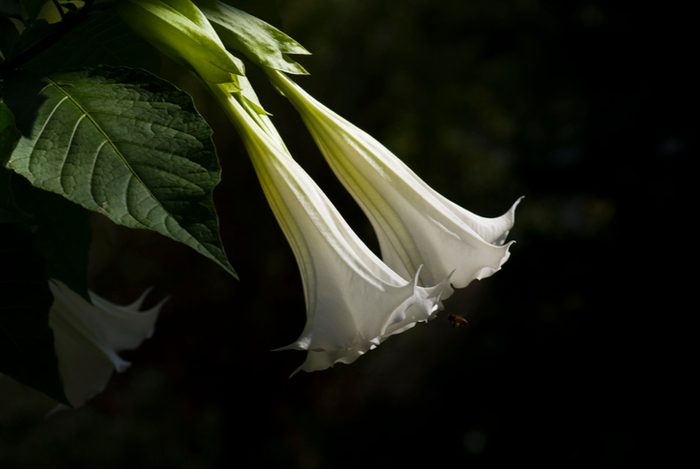
Angel’s Trumpet
Brugmansia spp., annual to Zone 10
This shrublike plant sports beautiful, sweetly scented blossoms that can reach 12 inches in length. The Betty Marshall variety’s ethereal trumpet-shaped blooms seem to glisten after dark. The pretty flower is very fragrant at night, but beware: All parts of it are poisonous.
Plant fragrant moonflower to attract moths.
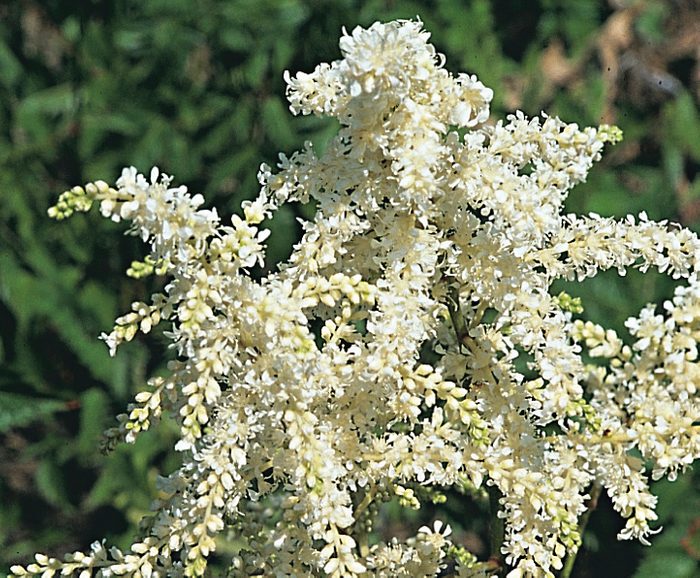
Astilbe
Astilbe spp., Zones 4 to 9
Its fernlike appearance helps astilbe fit right into a shade garden—though its flower spikes, which grow from about 1 to 4 feet tall, can’t help but steal the spotlight. For a touch of glamour, try Bridal Veil. From afar, the flowers on this and some other astilbe varieties look like feathers.
Create a patriotic garden with red, white, and blue flowers
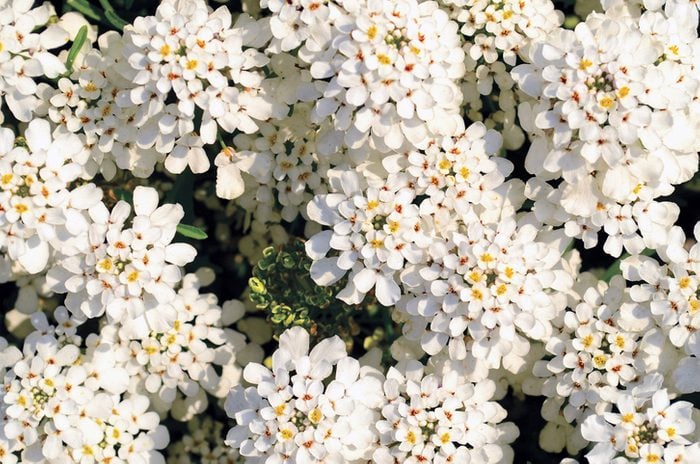
Candytuft
Iberis sempervirens, Zones 5 to 9
Like a late snowfall, candytuft brings fluffy white drifts to the spring scene, blooming until the early summer. It leaves pleasing evergreen foliage year-round.
Add contrast with the top 10 dark colored flowers that are almost black.
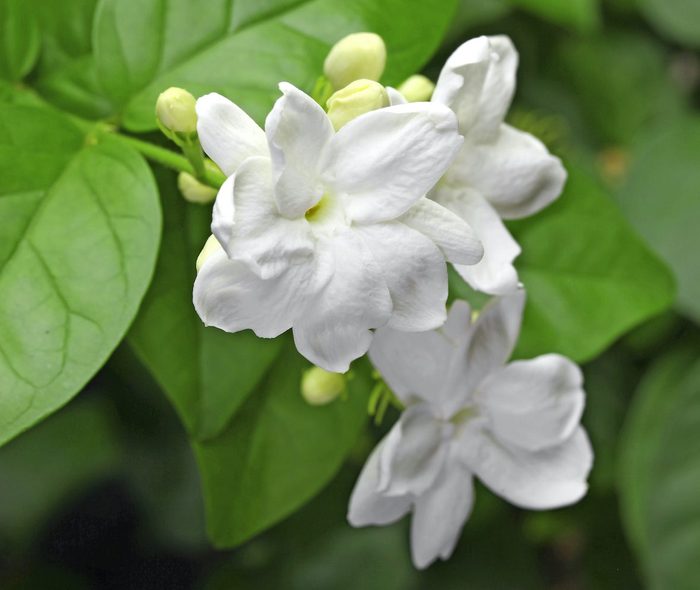
Arabian Jasmine
Jasminum sambac, Zones 9 to 10
Arabian jasmine is a gorgeous houseplant. It produces lush flowers that open as evening approaches and begin to close as day breaks. In the north, bring it outside in summer to get a little sunshine. Do not grow it in Florida or Hawaii, where it’s invasive.
Transform your garden into an oasis with the top 10 tropical plants.
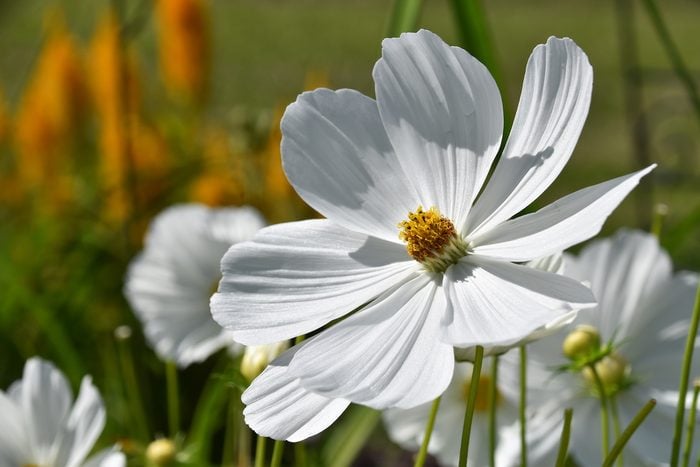
Cosmos
Cosmos bipinnatus, annual
This cheerful bloom adds a touch of whimsy to both formal and cottage-style gardens. Psyche White has jagged semi-double blossoms that give it a shabby-chic look that lasts all summer. The foliage resembles dill or fennel and makes an interesting contrast with broader leaves on nearby plants. Cosmos grows up to 5 feet tall.
Treat yourself with chocolate cosmos flowers.
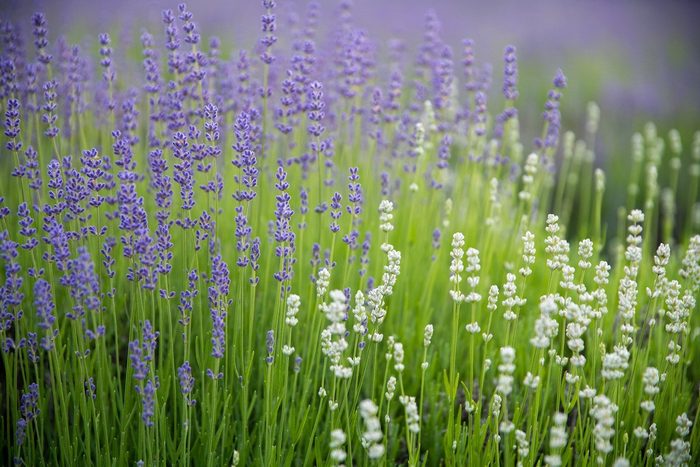
Lavender
Lavandula spp., Zones 5 to 10
If you’re searching for an elegant bloom, look no further. Gardeners know that there’s never a dull moment with lavender’s pleasantly scented spires. The mounding gray-green plants tend to be taller than they are wide and look exquisite in borders. Lacy Frills, the first white variety from seed, is cold-tolerant to Zone 6.
Discover 7 essential facts about growing lavender plants.
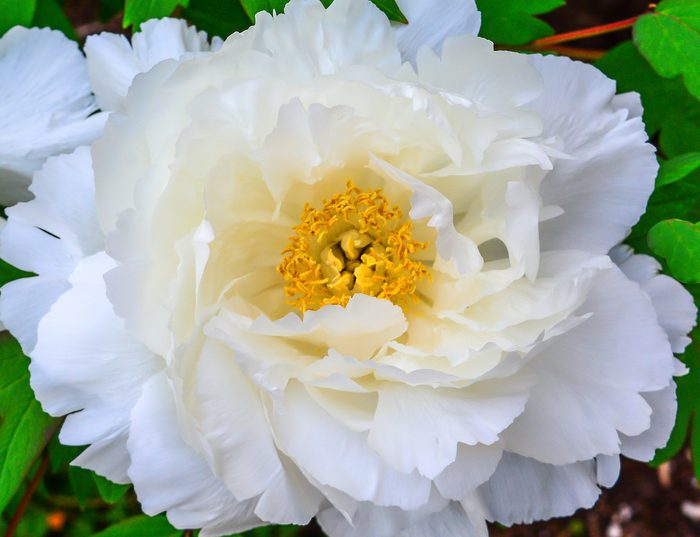
Peony
Paeonia spp., Zones 3 to 9
With hundreds of peony hybrids on the market, you have your pick of sizes and colors. Because it needs chilly weather to produce flowers, the peony grows best in areas that get cold winters. If undisturbed, this hardy and lush plant can survive for more than a century with little or no care. Bowl of Cream, a favorite white cultivar, features double blooms that make a big statement.
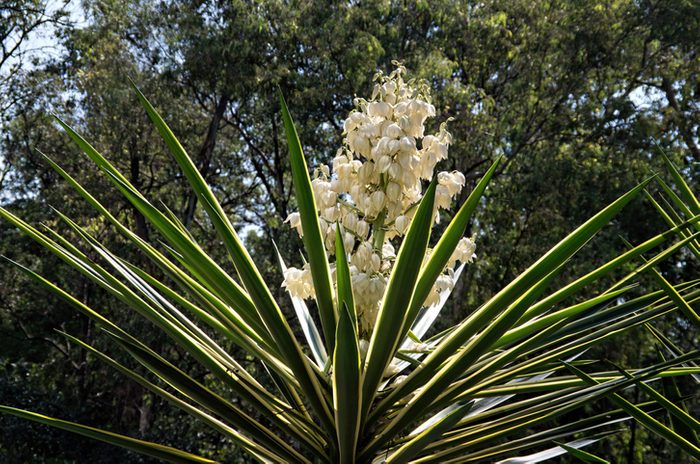
Yucca
Yucca filamentosa, Zones 4 to 11
Columns of bell-shaped buttery-white flowers add a soft contrast to the spiky evergreen leaves of this drought-tolerant plant. Growing 3 to 12 feet tall when in bloom, yucca makes a stunning showpiece in any garden.
Check out the top 10 classic yellow flowers to grow.
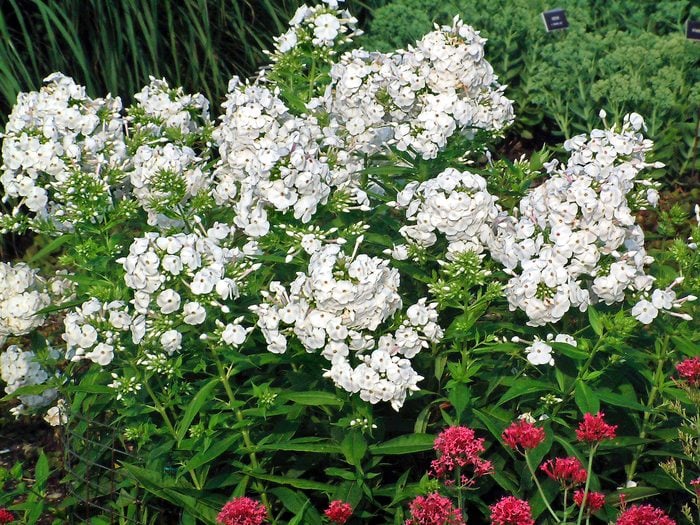
Phlox
Phlox spp., Zones 3 to 9
For many, the scent of phlox goes hand in hand with summertime (and butterflies). Some varieties display clusters of white flowers, while others are loose and carpetlike; most prefer full sun. Tiara has breathtaking double blooms and gorgeous all-white Backlight is disease-resistant; both are upright garden phlox cultivars.
We found trees with pink and white flowers in spring.
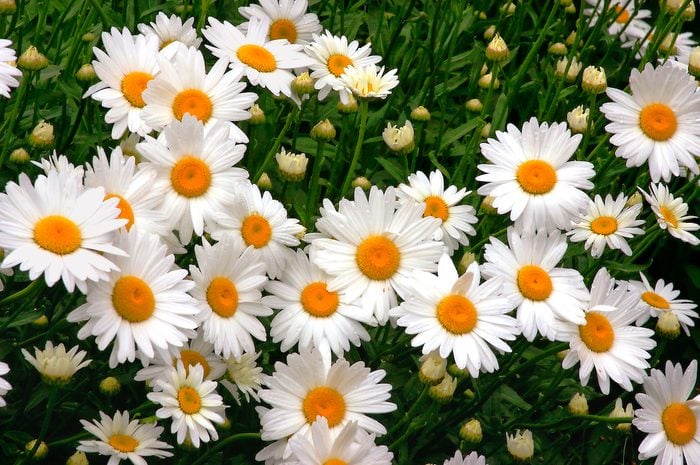
Shasta Daisy
Leucanthemum x superbum, Zones 4 to 9
Although daisies date back thousands of years, the Shasta variety is just over 100 years old. It was named after Mount Shasta, one of California’s tallest peaks. The white flowers bloom from early summer to autumn and plants range from 10 inches to 4 feet high. We like the tall Becky and dwarf Snowcap varieties.
If you love daisies, you’ll enjoy these interesting daisy facts.
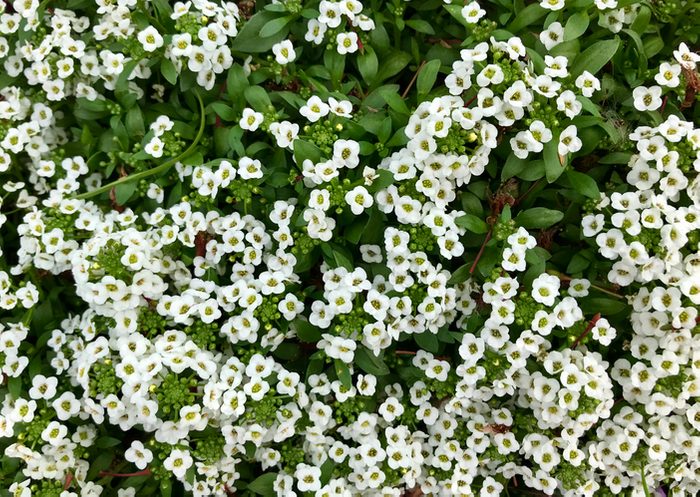
Sweet Alyssum
Lobularia maritima, annual
Believe it or not, this beautiful, low-growing border plant is a member of the mustard family. Clusters of tiny white flowers bloom for months in full sun to partial shade, but they do best in cool weather. After the heat of summer, cut back plants to encourage new growth and more blooms. For a white flower bed addition, try Carpet of Snow.
For a bold garden look, try the top 10 orange flowers to add a juicy burst of color.
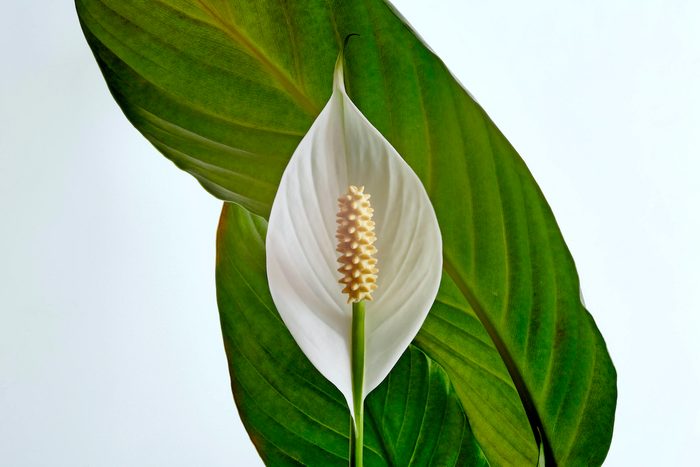
Peace Lily
Spathiphyllum spp., Zones 11 to 12
These common lilies love indirect light. Sporting luscious dark green leaves and white bracts, they do best when kept evenly moist. Give your peace lily plant a summer boost by moving it outdoors under a tree or in the shade of a building. Bring it back inside as temperatures drop below 50 degrees.
Check out the top 10 blooming houseplants to grow indoors.
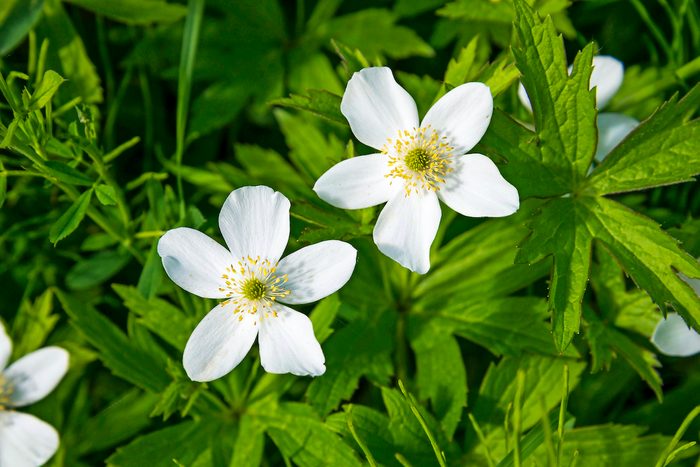
Canada Anemone
Anemone canadensis, Zones 3 to 8
Canada anemone, sometimes called windflower, is a marvelous native bloomer that reaches a little over 1 foot tall. The plant naturalizes well in moist gardens, so give it room to spread. To fill a space even faster, divide and replant the sections in May or September.
Plant a meadow with wildflowers for butterflies.

White Profusion Salvia
Salvia nemerosa, Zones 3 to 8
When planted in full sun, White Profusion salvia blooms continually all summer, especially with deadheading. The mounded form can reach up to 20 inches tall and wide, which creates a tidy appearance. It does well in containers, and the entire plant is fragrant. Don’t forget about fabulous foliage plants for garden pizzazz.
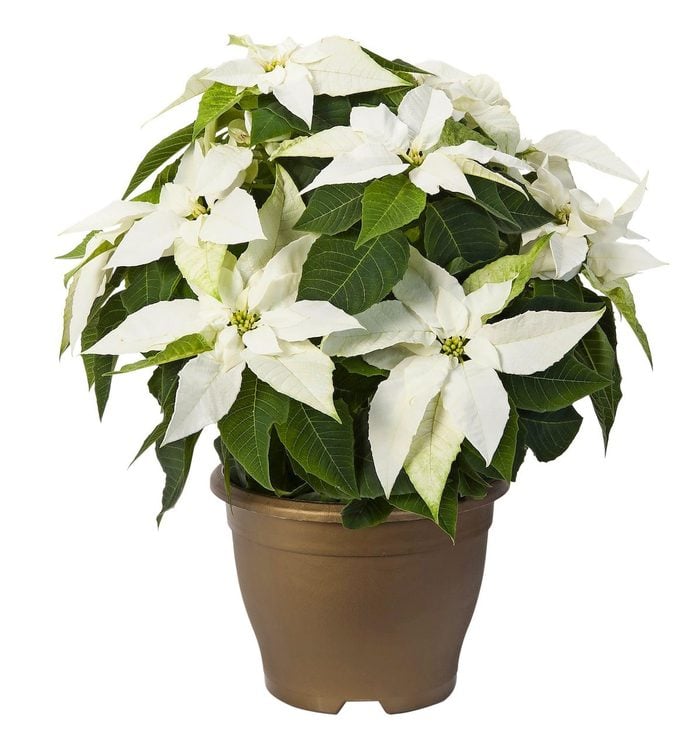
Princettia Pure White Poinsettia
Euphorbia hybrid, Zones 9 to 11
The white bracts of this Princettia Pure White poinsettia are modified leaves that change color to help pollinators locate the true flowers—the tiny yellow clusters located at the base of the bracts. Keep the plants evenly moist and out of drafts to prevent leaf drop.
In addition to poinsettia, grow these 10 easy-care holiday houseplants.
